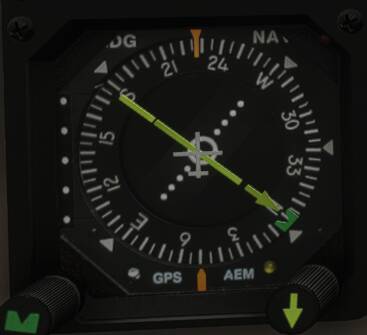Overall, my impression is that Carenado’s Seneca is reasonably close to book performance, both in airspeed and fuel flow. That’s impressive, especially since Carenado’s reputation is for excellent 3-D modelling but lackluster flight model and engine tuning. But the Seneca is decent in both respects – not perfect, but reasonably close.
I’ve gotten it to 230 knots GS with a small tailwind wind at FL200+ when running it flat out, not exactly an efficient cruise at those power levels though lol
Carenado is probably going to disappoint you if you want high quality add ons. They make very nice looking planes but realism often leaves a lot to be desired and they rarely patch bugs unless they completely break it.
I like the Seneca V quite a bit. It is the nicest of the steam gauge twins, IMHO. However, it isn’t a speed demon, and if you’ve got four adults in the plane you’ll be limited to 60% of fuel. Example: three people and ninety pounds of baggage will not make the trip from San Diego to Petaluma. The payload is the biggest limiting factor.
Is a Turbo Arrow better in tat regard - range vs. payload?
The Seneca V has a payload capability of about 1300 lbs. However, with full tanks (122 gals) you’re down to less than 600 lbs. for passengers and baggage. The Seneca burns about 24 gals per hour at 80% power. True Airspeed is roughly 155 kts. below 10,000 feet.
The Turbo Arrow III can carry even less with full tanks (72 gals) at 500+ lbs. depending on equipment. The Arrow burns about 12 gals per hour @ 75% power. True Airspeed below 10,000 feet is about 140-145 kts.
At “Oxygen Required” altitudes both aircraft will move faster: 165-170 kts for the Arrow and about 185 kts for the Seneca V @ 25,000 feet.
The Arrow has better range and endurance.
How do you manage to smoothly engage the autopilot during climb?
Whenever I hit VS, the aircraft pitches down wildly (as I release the yoke) before reaching the desired VS, it’s very dirty.
Have you figured this out I am having the same issue?
I usually just manually trim first to maintain my current altitude with 0 VS. Then I enable AP and configure VS that allows me the best climb rate at 110 knots. That’s how I avoid the sudden dive.
How I got it to work with the Islander is to engage autopilot on the ground, set target alt and initial climb v speed, then disengage autopilot before takeoff. Then when I re-engage it the aircraft pitches for the set v speed.
Not sure if the Seneca works the same but also a g530 so if it is utilizing the sim side AP tools it should work the same- let me know if it works!
As far as I know, the AP on the Carenado Piper Seneca V is different from BN2. It doesn’t allow you to set predetermined altitude to capture. It only supports Alt hold.
anyone knows hot to set the autopilot altitude in this plane?
I haven’t flown the Seneca in a long time but if I remember correctly, it has the STec autopilot like their other Pipers. You can’t set an altitude on those. You can control VS and then watch your altitude as you climb. When you reach the desired level, activate ALT and it will hold it there.
Yep, it has no real ALT mode, thanks
The Turbo Arrow’s alt hold capability can be engaged by clicking on the Piper logo above the rotary autopilot knob. Kind of a secret gift.
Yes, but this discussion is about the Carenado Seneca.
I have found the ALT and VS modes. What I have not found is the AP on/off (I’ve been using the Z hotkey) but would enjoy knowing where the heck that AP switch is. Thanks!
It’s a 3-way toggle switch located in the bottom right, below the avionics. It says FD/AP MASTR FD OFF. Top is AP & Flight Director, middle is only Flight Director, bottom is both off.
Thank you!
Someone knows what this yellow Know and Arrow is for?
